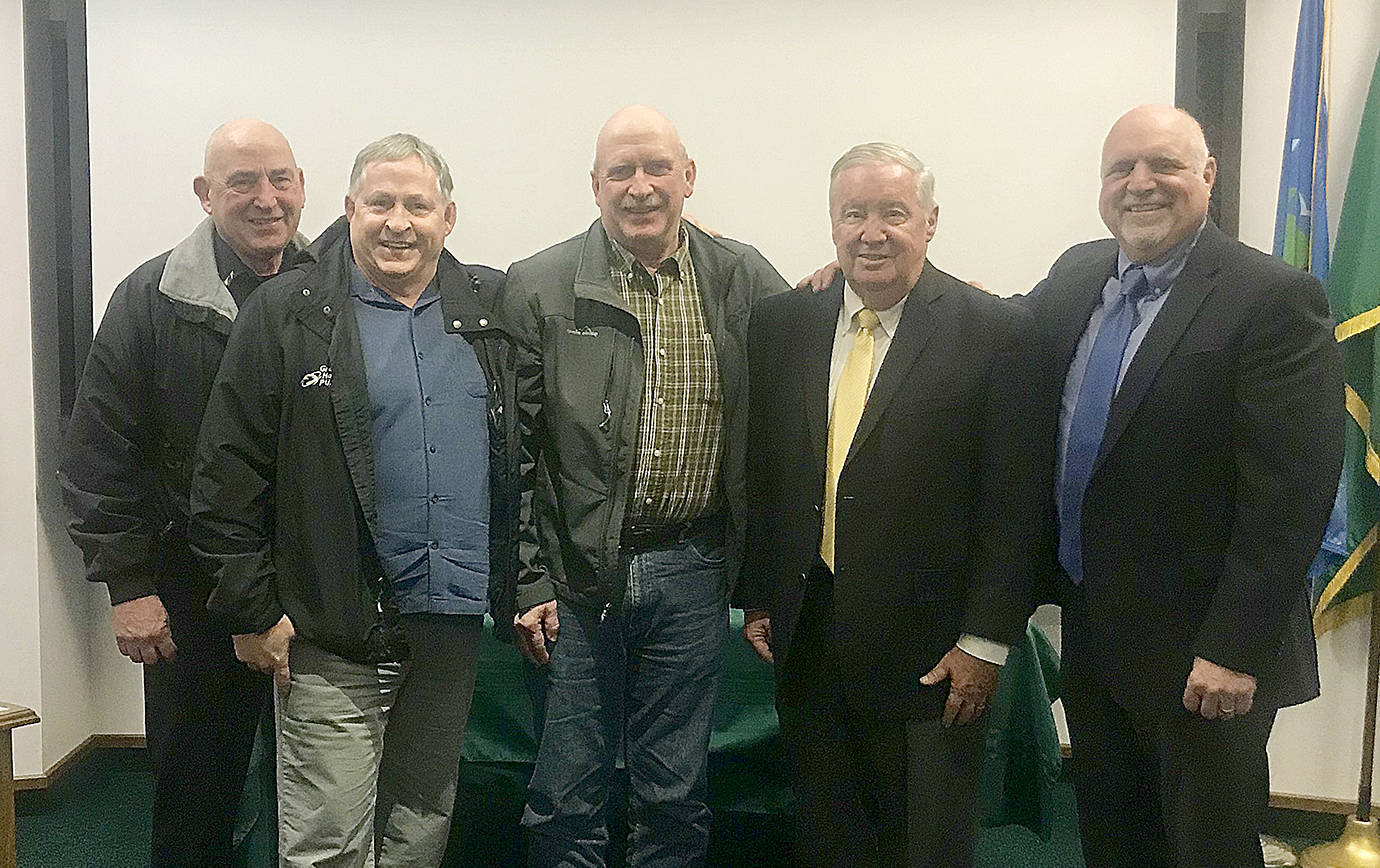Schafer Island Beach near Westport is the best location for receiving transoceanic fiber-optic cables destined for a landing station at the Satsop Business Park, according to the results of a feasibility study prepared for the Port of Grays Harbor and Grays Harbor PUD.
Also discussed was the potential to increase the power capacity at the Satsop Business Park, another joint project between the Port and PUD. According to Port spokeswoman Kayla Dunlap, this was the first joint meeting of the two commissions since the transfer of the Satsop Business Park to local ownership in 1998.
“We found that Schafer Beach was most attractive,” said Dallas Meggitt, technical director for Sound and Sea Technology, the firm that drafted the study. He and associate Chelsea Meggitt delivered their summary of the report during a rare joint PUD/Port commissioners meeting Tuesday.
Dallas Meggitt said there were several favorable characteristics at the Schafer Beach location. There is ample space to stage the horizontal directional drilling equipment used to feed the cable underground north of the Schafer Beach approach road, and a location south of the road immediately beyond the dunes to set up and use that equipment.
“This mitigates environmental concerns associated with the dunes,” read the report. The fact that it’s publicly owned land also helps streamline the environmental review process, said Meggitt.
The location offers quick access to existing utility lines on public rights-of-way on State Route 105, according to the report. This would allow for the fiber optic cable to be fed to the Satsop Business Park, where a landing station would take in the lines. From there, the high-speed lines could be connected along the I-5 corridor and beyond.
Other locations that were considered were West Ocean Avenue, the Westport Marina and Moon Island in Aberdeen.
Attracting investment in a cable landing and landing station requires a great deal of commitment, said Meggitt.
“It takes two years from marketing to when you land the cable,” he said. “You have to be persistent and have a strategy in place.”
The report recommended $400,000 annually be set aside for marketing the cable landing. Customers who would be interested in such a facility along Grays Harbor are primarily content providers such as Netflix and Google. In turn, the investment in marketing consultants could lead to private investment in the initial $5 million to $7 million cost of constructing the 10,000-square-foot station. The cables themselves are typically owned by the content providers. The initial outlay for the cable landing would be in the $20 million range, according to the report.
The cable landing itself would provide seven to 10 jobs, produce more than $1 million in annual economic output and roughly $250,000 in annual tax revenue, according to the report. Construction of the cable landing would provide 60 full-time jobs, produce $8 million in economic output and take in $500,000 in tax revenues. Meggitt said an important part of the plan is significant tax incentives to potential investors.
“We appreciate the partnership with the PUD on the initial work done to better understand both the business and infrastructure opportunity that transoceanic fiber could bring to Grays Harbor,” said Port Commission President Stan Pinnick. “Partnering for the future on these types of opportunities will surely benefit the citizens and businesses of Grays Harbor.”
As Alissa Shay, manager of business development for the Satsop Business Park, explained to the commissioners, the current power capacity at the park is inadequate to meet the demand of new businesses attempting to locate there.
“We don’t have a lot of capacity left,” she said. “If the current trend continues, we won’t be able to meet demand” for power.
The Port and PUD have been working together to find a solution for about two years, according to Shay, and Schuyler Burkhart, PUD engineering manager, explained the most attractive and cost-effective option is linking the current PUD substation in the business park to an existing Bonneville Power Administration substation nearby. Burkhart said that would increase the park’s current 40-megawatt power capacity to 80 megawatts, which would attract businesses like the data centers that would use the high-speed data transfer capabilities of the fiber-optic cables in the landing station proposal and use “10s of megawatts” to function.
“With more than 600 acres of developed land and buildings, expanding power capacity to accommodate future growth at the park is critical,” explained Port Commissioner Phil Papac. “We look forward to working with the Grays Harbor PUD on this important project so that we can continue to attract investment and employment opportunities to Satsop in the future.”
The cost would be around $3 million to $4 million to link the stations, said Burkhart. The Port and PUD have teamed to fund a study to check the feasibility of linking with the BPA substation, committing $25,000 to the study with the remaining $50,000 funded through a grant already awarded by the county. The results of the study should be available in the third quarter of 2019, said Burkhart.



